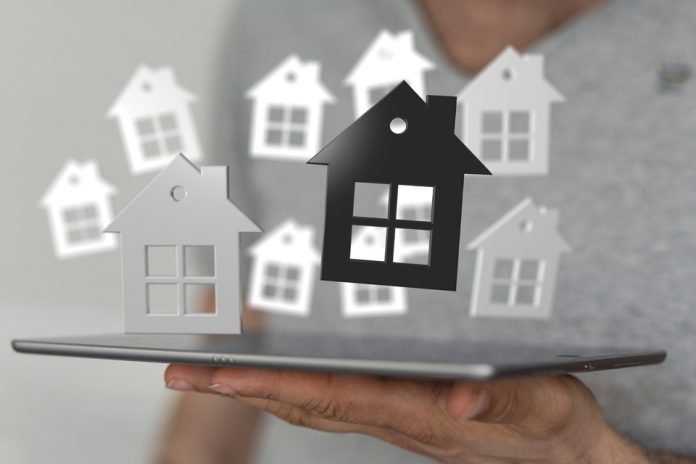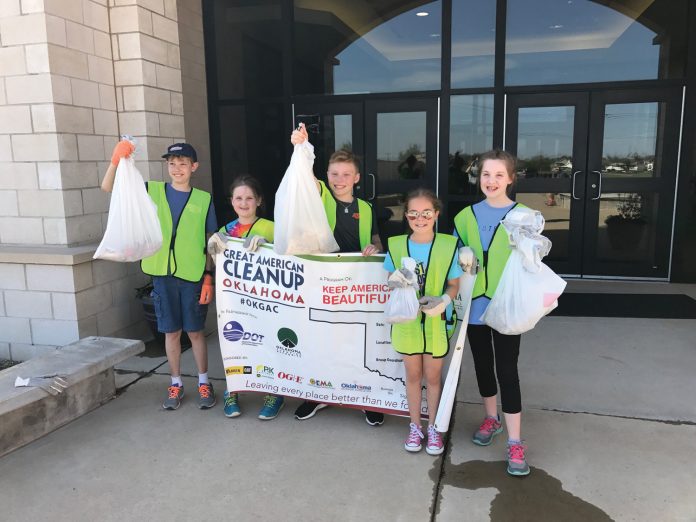Pet therapy helps residents feel better emotionally and physically. Animals help lift a person’s mood and give them something to focus on outside of themselves. Residents who feel sick, lonely or depressed will often respond to an animal and offer genuine affection and unconditional love. The resident may smile, open their eyes, pet or talk to the animal.
Touching and interacting with animals can help lower a resident’s blood pressure and heart rate and provide stress relief. Residents who have regular visits with pets have longer life spans and suffer from less depression.
Animals increase sensory stimulation, inspire a sense of purpose and increase social interactions with the staff. Pets serve as a valuable conversation starter, and are useful in promoting visitation of children with the elderly. Residents tend to look forward to their visits. They enjoy hearing children tell about their pets.
How does pet therapy work? The animals are non-threatening and non-judgmental. They do not expect anything and there is no pressure on the resident to do or say anything. They accept and are open to whoever the person is and whatever that person needs.
Ombudsman volunteers visit nursing home residents weekly. For more information on the ombudsman program, contact ombudsman supervisors Patricia Shidler, Tonya VanScoyoc, Debra Burris, Eric Locke, or Erin Davis at Areawide Aging Agency at 1-405-942-8500. Group presentations and flexible training schedules are available.
PET THERAPY AND NURSING HOME RESIDENTS
Lifestyle Options Continue to Change
Article by Nikki Buckelew, Buckelew Realty Group’s Mature Moves Division with Keller Williams Realty. www.okcmaturemoves.com
In generations past, there simply weren’t many options when it came to where one would live out their retirement years. In fact, there were basically three choices: 1) Stay put in your own home, 2) live with your kids, or 3) move to a nursing home when “it was time.”
The landscape has certainly changed significantly in the last decade. Not only are people living longer, but retirees have more options than ever before as it relates to housing options. So many choices it can make your head spin!
Fewer people as of late are opting to stay in a home that is too large, too costly, or losing value due to neighborhood decline. Even fewer are electing to move in with their adult children. More and more seniors are taking a proactive approach concerning their retirement lifestyle, with the trend toward community living designed to support and encourage the independent lifestyle they value.
The new normal
Included in the available stock of senior living options are upscale luxury apartments catering to the active 55 and older crowd, as well as all-inclusive resort style properties resembling a cross between 5-star hotels and country clubs. Private residences including duplexes, cottages, garden homes, and villas are also on the rise, boasting neighborhood club houses with fitness and media rooms, walking paths, organized activities and trips, and more. All this and they even take care of your yard and maintenance.
For those needing a bit slower pace and maybe even a little help from time to time, there are supportive housing communities designed to help people remain autonomous and independent by providing non-medical assistance. Key attractors to these communities include 2-3 prepared meals a day, housekeeping services, rides to the doctor and local retail and grocery stores, and 24-hour concierge access. When needed, many of these communities can provide or arrange for assistance with dressing, bathing, and medications.
Of course there are still the communities equipped to care for those with chronic medical or mental illnesses or degenerative diseases. Unlike the independent and assisted living communities mentioned above, however, these longterm care facilities are ‘chosen’ by default only after other options have been ruled out.
Comparing options can be complicated
With all these options, especially the all-inclusive ones, the challenge is figuring out which communities have what you are looking for. More importantly, what services are offered and what the fees include. Each development has varied unit sizes and meal options, as well as ever-changing, healthcare options and activity programming.
Ownership may belong to a for-profit enterprise or operated by a not-for-profit organization. Some are affiliated with churches, universities, and local municipalities and each has it’s own unique philosophy of property management.
Taking proactive steps
The key to finding the right fit is investigating the various options available well in advance – long before you are ready to make a change. By doing so, you remain in the driver’s seat when it comes to your lifestyle choices, rather than leaving it to chance (or up to your kids).
Fortunately, senior adults have a variety of free educational opportunities in the metro area to choose from when it comes to learning the ins and outs of 55+ living options. Some events are hosted by senior living communities who offer optional campus tours directly following the educational program and others are held in event centers. The goal of these organizations and associated expert speakers is to help older adults and their trusted advisors navigate the sea of information related to senior living.
Below is a list of a few upcoming events (advanced registration required):
Candid Conversations: Senior Living Options – Epworth Villa Retirement Community – August 15th at 10am RSVP: 405-752-1200
How to Pay for Senior Living – Spanish Cove Retirement Village – August 31st at 10am RSVP: 405-354-5906
The Truth About Senior Living – OptionsMAPS3 Health & Wellness Center – September 14th at 10am & 2pm RSVP: 405-563-7501
Getting Real About Real Estate after Retirement – Concordia Life Care Community – October 24th at 2:30pm RSVP: 405-437-1414
Significant Women in Oklahoma Agriculture Nomination Period Now Open
The Oklahoma Department of Agriculture, Food & Forestry (ODAFF), in collaboration with Oklahoma State University, is continuing to recognize Significant Women in Oklahoma Agriculture. The initiative is designed to honor and recognize numerous women in agriculture across all 77 counties of the state, from all aspects and areas of the industry ranging from producers to educators, leaders to entrepreneurs, veterinarians to board members and many more.
“Our hope is to continue telling the stories of the countless women who give selflessly to this industry but don’t always receive an award,” said Oklahoma Secretary of Agriculture Jim Reese. “This has been such a fun project for all of us in agriculture, learning of and reading the stories of these women and their contributions. We thank all of you who have sent in nominations.”
One honoree is recognized each week on ODAFF’s social media with a detailed biography of her “ag story.” Additionally, a press release acknowledging her selection is submitted to area newspapers. The benefit of using social media for recognition is the accessibility to most everyone and allows the archives to be accessed long after they were published.
“We encourage everyone to submit a nomination,” said Secretary Reese.
All nominations must be submitted online at http://okwomeninagandsmallbusiness.com/. Please submit nominations by September 30. A selection committee will continue the process of identifying nominees to be recognized as Oklahoma’s Significant Women in Agriculture.
Positive Change Reaches OK Communities through Great American Cleanup
In the culmination of a three-month environmental effort, the numbers are in, and the hard work of Oklahomans has proven to pay off once again.
For the fifteenth consecutive year, Keep Oklahoma Beautiful (KOB) took part in the nation’s largest cleanup, sponsored by Keep America Beautiful. Volunteers from all over America participate in the Great American Cleanup (GAC), and each year, Oklahomans do their part to keep the state beautiful. Since 2010, Oklahoma has had 100 percent county participation, and this year was no exception. From March 1 to May 31, over 46,000 volunteers and participants fought dirty to keep Oklahoma clean.
Organizations that register for the GAC in Oklahoma receive free trash bags, gloves, vests, water and more. In addition, 36 organizations received cash grants and 11 received equipment grants.
Since 2002, the GAC in Oklahoma has collected over 214 million pounds of litter and debris. Just this year, Oklahoma communities cleared over 3,500 miles of roadways, shorelines and hiking trails. Nearly 192,162 pounds of hazardous waste and electronics and 13,142 tires were collected, helping to protect our environment as well as keep it clean.
The Great American Cleanup is far more than a cleanup effort, however. Communities across the state participate in beautification projects, planting gardens and restoring buildings. This year, communities planted over 7,300 flowers, seedlings, shrubs and trees and painted or renovated 35 buildings.
GAC events have the power to bring communities together, with over 700 groups teaming up this year. 4-H clubs, civic organizations, FFA programs, businesses, chambers and municipalities worked together with the unified goal of keeping Oklahoma clean. The collaboration is 100 percent statewide, and Keep America Beautiful has recognized KOB several years in a row for their complete county participation.
“The KOB GAC is our signature program for which we are recognized nationally for having at least one community in all of our 77 counties participate,” said Jeanette Nance, KOB Executive Director. “It speaks volumes when we can be the facilitators for communities to come together for a beautiful cause.”
The GAC in Oklahoma not only makes municipalities more beautiful, but also unites community members.
“Community cleanups are a really fun way to volunteer,” said Wanda Gray, coordinator for the INCA-RSVP cleanup in Tishomingo. “What’s better than spending a couple hours with family, friends, and neighbors making your home a better place? Our volunteers are uniting through community service, responsibility, and sharing of the natural environment to help drastically improve the quality of their communities.”
This annual program in Oklahoma strives to strengthen communities, all while keeping this state more eco-minded and environmentally friendly. KOB maintains the belief that unity through community improvement has the power to make positive change. “For us, the Great American Cleanup is so much more than a series of litter pickups or community improvement projects,” said Brenda Russell, with the Twin Cities Revitalization Project. “It is our opportunity as a community to come together and truly showcase that we as a whole are greater than the sum of our parts.”
Keep Oklahoma Beautiful is a statewide nonprofit with a mission to empower Oklahoma citizens to preserve and enhance the state’s natural beauty and ensure a healthy, sustainable environment. To learn more about their programs, visit keepoklahomabeautiful.com.
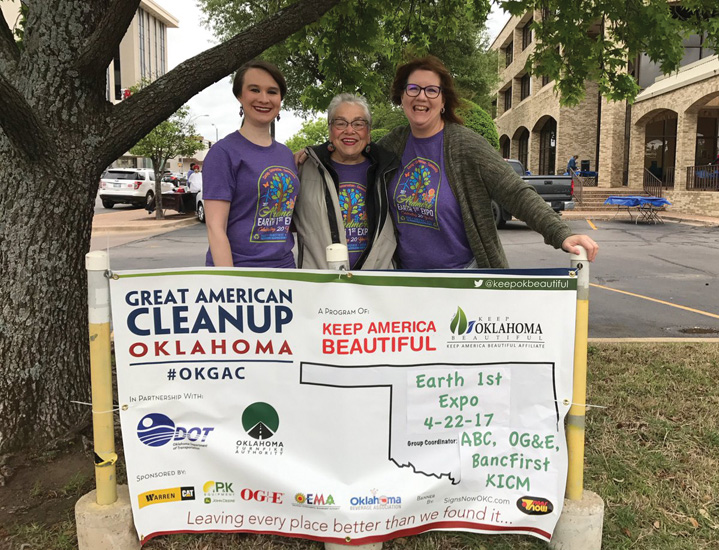
Compassionate legacy: Stone Creek Assisted Living

The new Stone Creek Assisted Living and Memory Care land was once a farm.
Almost every footstep brings a memory for Larry Griffin, who was raised on the bygone Griffin Farm. He had chores before and after school.
Griffin is pleased that Stone Creek Assisted Living and Memory Care is now on the southwest corner of NW 178th Street and Western in Oklahoma City because the old farm site continues the compassionate legacy of his family.
Stone Creek Assisted Living and Memory Care opened in late June. The grand opening is set for August 10th from 5-7 p.m. at the complex nearby Edmond.
“We’d love for folks to stop in and see us then, enjoy some entertainment and free food and a chance to look around,” Kelley said.
As an assisted living and licensed community, they are able to help people with bathing, dressing, activities of daily living and medications, said Anita Kelley, community relations director. The complex has 56 rooms in assisted living and 36 in memory care.
The 183-acre Griffin Farm was built in 1905 and was later owned by Griffin’s parents, Melvin and Anna Mae Griffin. Larry still lives nearby the Stone Creek Assisted Living and Memory Care where he is a frequent visitor. The original white two-story farm house was removed in 1958, Griffin said.
“We tore down that house and it had square nails in it,” Griffin said.
His parents bought the farm in the late 1920s and Larry, two sisters and his parents lived in the house until 1958.
“My dad taught me responsibility. He taught me a work ethic,” Griffin said.
If he did something wrong, his dad would ask him what he learned from his mistake.
Two productive oil wells were constructed on the property in 1958 and the family built another house.
“But my dad was such a giver he used money to help people,” Griffin continued. “He helped his two brothers through college and helped his mom and his sister. He used all that money he got every month to help people out.”
“In fact when he died, people came to me and told me — some of them were crying with tears and said, ‘Your dad helped us out when we were in trouble,’” Griffin said.
A few years following 1958 Griffin brought his dad a royalty check, but Melvin tore it up and said, “No. God gave me those wells. I didn’t have to work for them. You keep that money and keep going,” Griffin recalled.
“He was a giver,” Griffin said.
Fifty acres of the farm was wheat. Griffin helped plow the fields, helping his dad. The land under the footprint of Stone Creek Assisted Living and Memory Care was once one of two pastures.
“We had dairy cattle, beef cattle; we had a couple of horses, and I had 35 head of sheep,” Griffin said.
Before July 4 would come, he would help his dad fill buckets of water to place in the back of the family pick-up. Always at the corner people would shoot rockets and fireworks.
“They’d set the grass on fire,” Griffin said. “So we’d have to go down there and beat it up. And if it got out of hand we’d have to call the fire department.”
His dad always plowed back for or five feet to ward off grass fires at one side of the pasture.
Stone Creek Assisted Living and Memory Care now has neighborhoods nearby where Griffin would run around as a boy.
“I got to talking to my dad for a month and a half before he died. He had cancer and was 90,” Griffin said. “He gave my sister and I this farm. I tried to get him to sell it years ago and move to Edmond. He wouldn’t do it. He said, ‘I’m going to die here on this farm.’”
Griffin told his dad they would do something nice with the farm. Twenty acres at the corner was already zoned for commercial use. His dad always prepared for the future. His dad gave three acres to Trinity Christian Church to build the church on Edmond Road before he died in 2004. Griffin’s mom died 11 months later.
Larry Griffin is retired now. After leaving the farm he attended the University of Oklahoma for two years, but was drafted to join the war effort in Vietnam. He was gone for a year and returned to work on the farm. And he continued his education at then-Central State College (UCO) and earned a marketing degree. He worked at a medical company for three years before he was hired to be a hospital manager. Soon Griffin became a regional hospital manager over five states for 29 years before he retired in 2008.
His wife Sharla passed away ten years ago, but he still has three adult children. His daughter is 30 and his two sons are 40 and 43.
Today, he says the Stone Creek Assisted Living and Memory Care is a beautiful place.
“Like I said, My sister and I were going to have nice things along here along these 20 acres,” he said. “This will be very nice.”
Oklahoma CLICK for Babies Campaign Seeks Local Knitters
The Oklahoma State Department of Health (OSDH) needs your help as we CLICK for Babies. This campaign is to create awareness of the Period of PURPLE Crying to prevent Shaken Baby Syndrome. Frustration with crying infants is the number one trigger for the shaking and abuse of an infant. The OSDH is recruiting crochet artists and knitters to help reach this year’s cap goal of 4,300 to spread Shaken Baby Syndrome prevention efforts across the state.
The Period of PURPLE Crying is a time when babies cry more than any other time in their life. It is important for parents to know that it is a normal and healthy part of infancy, that it is not their fault, and that it is not going to last forever. Currently, Oklahoma has 41 birthing hospitals participating in providing new mothers with The Period of PURPLE Crying DVD to educate them on normal crying patterns, how to cope with unsoothable crying, and the importance of never shaking a baby. Along with the DVD, in the months of November and December, each newborn will receive a purple baby cap as a reminder of the importance of never shaking a baby.
Volunteers are encouraged to knit or crochet newborn baby boy and girl caps of any shade of purple with soft, baby friendly yarn. The caps can have a variety of fun colors and patterns, as long as they are at least 50 percent purple and free of straps, strings or other potential choking hazards. Purple baby caps are accepted year-round. Only caps received by Oct. 1 will make it in this year’s hospital distribution.
Purple caps can be mailed to:
Oklahoma State Department of Health, ATTN: Maternal and Child Health, 1000 NE 10th St, Oklahoma City, Ok 73117-1299
To obtain patterns for caps, guidelines and “CLICK for Babies” campaign details, visit clickcampaign.health.ok.gov, or call Amy Terry at (405) 271-4471, or email amyt@health.ok.gov. Media inquiries should be directed to Cody McDonell at (405) 271-5601.
Ms. Senior America Pageant Celebrates Beauty and Strength
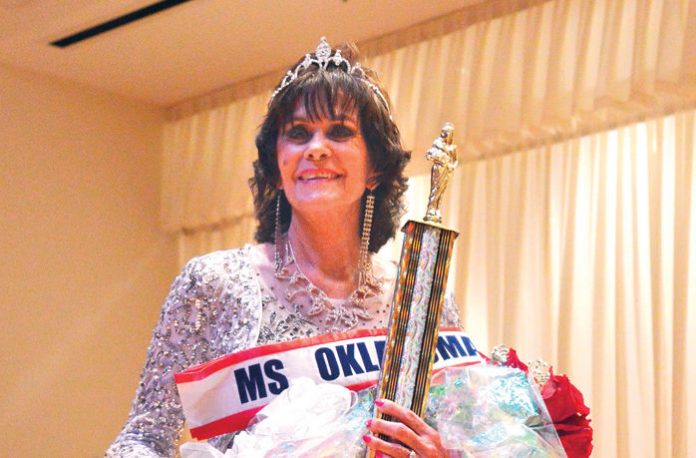

Dawn Anita Plumlee Named 2017 Winner
story and photos by Traci Chapman
The Ms. Oklahoma Senior America Pageant isn’t just about beauty or talent, but a celebration of women who have lived a live full of love and meaning, who exemplify all that seniors can be and all they can offer – and the women who this year competed for the crown showed there are no limits for those who are willing to step beyond their daily confines.
“Life is a gift – open your heart and your mind to all life has to offer,” Dawn Anita Plumlee said.
Plumlee received another gift during the July 29 pageant, as the Velma, OK country singer and songwriter was named Ms. Oklahoma Senior America for 2017.
“I am so honored, I’m so happy and I look at my fellow contestants and that makes me feel even more special, because they are such wonderful women,” Plumlee said after the event. “They are all queens to me.”
Plumlee was one of nine contestants who competed this year for the honor, someone who is not new to the pageant – she was named first runner up in both 2012 and 2013. Flipping through the photos of past Oklahoma events, it was clear she was not alone.
“This event is something that brings out the best in everyone who takes part in it,” Plumlee said. “It’s an experience none of us ever forget and it really can be a life-changer, not only for the one who walks away with that crown – that’s the reason why so many of us stay active in the organization.”
The contestants
Ms. Oklahoma Senior America 2017 – Dawn Anita Plumlee
Dawn Anita Plumlee said she has “just always been a singer,” someone who not only draws on her country roots but also celebrates them. That was on show during Plumlee’s talent entry, her rendition of “Love Sick Blues.”
Plumlee life has always centered around music – after her family, she said. After turning down an RCA record contract when her children were small, she continued her work in the music industry on a smaller scale until they were grown; she has had three charted country records and has won several songwriting and performance awards, including Oklahoma Opry’s Female Vocalist and Entertainer of the Year. The new queen also wrote “Gift of Life,” a song aimed at promoting organ donation.
Another of Plumlee’s passions is horses, and she has won several shows, as well as embarking on a horseback journey from Oklahoma to Nashville with her husband of 59 years, Jerry.
First Runner-Up – Susannah “Sam” Koebrick
Susannah “Sam” Koebrick was the first female masonry instructor to work in the Oklahoma Career Tech System, instrumental in both designing and promoting the Oklahoma State & Education Employees’ Insurance Program.
A Bethany resident, Koebrick performs in Oklahoma Seniors’ Cabaret and El Reno Community Theater, as well as with her husband, Richard, in a variety of venues across the state.
“Keep an active mind, an active body, smile, have a sense of humor and treat everyone as you wish to be treated,” Koebrick said.
Second Runner-Up – Kathryn Gordon
Kathryn Gordon has had a varied career – as a typesetter, legal secretary, teacher, business owner and more. But, at age 62, Gordon decided to make a change, graduating from cosmetology school and now working as a hairstylist and nail technician.
Gordon, who graduated from University of Central Oklahoma and University of Oklahoma, was also a gymnast in the 1950s and 1960s as a member of the state’s only gymnastics team, Oklahoma Twisters. She won Junior Olympic Tumbling state and national honors, was a member of the 1966 Pan American Gymnastic Team and a 1968 Olympic gymnast. Gordon, who donates time helping children involved in gymnastics, showed her skills during her tap dancing talent entry, which included a cartwheel and handstand.
“Every day is an adventure,” Gordon said. “Every day I get up and put on my medals – humility, forgiveness, joy, faith and trust – and go out into the world, looking for the best in everyone I meet.”
Third Runner-Up – Carla Joy
Carla Joy is also an entertainer, something she started at age three when her parents put her onstage during a movie house intermission to sing. Performing this year at the Oklahoma Senior Follies, Joy also sings for fundraisers and at nursing homes and helped Las Vegas’ Harrah’s Casino begin a trio of karaoke shows.
Joy worked for 38 years in real estate, beauty and fashion and continues her interest in those endeavors, always trying to encourage others, she said.
“Get up, get dressed, show up and never give up,” Joy said.
Marilynn Blackmon
Marilynn Blackmom said that in a sense her life began at 60 – she went back to college, becoming certified in workforce training and development and working as an adjunct instructor at Eastfield College, located in Mesquite, Texas.
After battling low self-esteem for many years, Blackmon works to help others, teaching classes and obtaining her certification as a master coach in self-esteem elevation for adults and children. Her journey conquering self-esteem issues also led Blackmon to found her own business, “Fly Without Baggage.”
“Soaring, falling, daring to soar again anyway to soar and soar again,” she said.
Boonie Mason
Boonie Mason’s life changed in 1980 with a Multiple Sclerosis diagnosis – a situation she used to help others as she became peer counselor and Co-Chairman for an Oklahoma City MS support group. In 2004, Mason was awarded MS Society’s chapter President’s Award for Volunteer of the Year. She said those with MS and other similar diseases should never give up, showing her determination by performing a tap dancing routine during the pageant’s talent portion, despite walking with a cane.
Mason attended Oklahoma State University and worked as Yukon Chamber of Commerce manager, First National Bank public relations officer and an Oklahoma City doctor’s office manager.
“Remember how short life is – and for my MS friends, I want to let them know that life is not over,” Mason said.
Barbara McMullin
Barbara McMullin is the mother of five grown children, two of them deaf. That led McMullin to move her family to Oklahoma City so the two – Pam and Jeff – could attend OU Medical Center’s John Key Speech and Hearing Center.
McMullin worked and traveled overseas for many years and enjoys volunteer work and genealogy.
“I challenge myself today and tomorrow is my reward,” she said.
Sharon Moore
Born into a family of 11 children, Sharon Moore said faith and family have remained her focus throughout her life. At 69, she retired from a 31-year career at Legal Shield, and Moore said she decided to enter the pageant to find a new lease on life after the recent death of her husband.
Moore helped raise eight children, and now has 15 grandchildren and seven great grandchildren. She plays piano, sings and dances and enjoys writing poetry and journaling.
“Never stop learning – give your compassion and grace,” Moore said.
Gayle Orf
At 69, Gayle Orf took up the ukulele, a skill she exhibited during her talent performance of her own composition, “Lola La Spud.” That spirit of never slowing down helped land Orf a recent contract to do print modeling with a national agency; she teaches healthy living and entertains patients at a local cancer hospital and at senior venues.
Orf became the guardian and surrogate mother – at 60 – to a nine-year-old girl living in a children’s home after the death of her mother. Today, that daughter is a self-supporting college student.
“Life is to be enjoyed,” Orf said.
The Pageant
Ms. Senior America was founded in 1971 by Al Mott, who first started the contest in a New Jersey nursing home. At the time, a few contestants took part; the non-profit foundation now gathers hundreds of seniors annually to take part in pageants across the country, as well as the national pageant, held each October.
Before the day of the pageant, judges conduct interviews with each contestant. The event features talent and evening gown components, as well as the chance to share a 30-second “Philosophy of Life” with the audience.
“This is simply a celebration of beauty and accomplishment, as with any beauty pageant – but it’s a way to show that life is only beginning at 60,” Ms. Senior Oklahoma Foundation Administrator Ladell Maxwell said. “These ladies really do embody our philosophy of grace.”
Tying the Knot
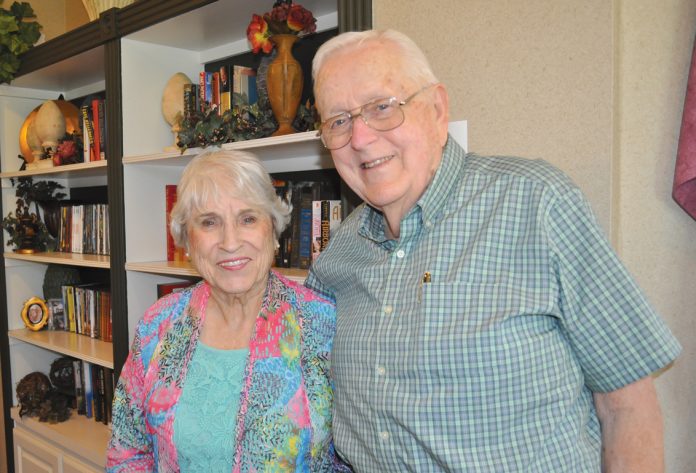
by Bobby Anderson, Staff Writer
Excitement is buzzing up and down the halls at Village on the Park in Oklahoma City.
The retirement community is atwitter over what is expected to be the blockbuster event of the summer – the wedding of residents Ann Trumbly and Bud Barker.
“He caught me in a weak moment,” the 84-year-old Trumbly smiled when asked what led to the upcoming August ceremony.
Both currently reside in separate cottages at Village on the Park and each lost spouses in the past.
Neither ever dreamed they would remarry.
“We just clicked, we really did,” Barker said. “We weren’t expecting it but it happened.”
The couple’s first official date came last October when a group of Village on the Park travelers went to Royal Bavaria restaurant in Moore to celebrate Octoberfest.
For weeks Barker had been telling Marketing Director Karen Proctor that he planned on “bringing a friend” but declined to say who it was.
“And forever they were just going to be friends,” Proctor said, unfolding the story.
The couple agreed to go out once a week for dinner. One week Trumbly would pay, the next Barker would pick up the check.
“Somewhere along the way they shocked me,” Proctor said. “They’re both educated. They both love music and they both just love talking to each other.”
A few months ago the couple pulled Proctor aside to tell her the big news.
“I just cried and cried and cried,” Proctor said. “I was shocked. They had kept saying over and over it was nice to have a good friend.”
But both agreed it was great to have a best friend again.
EVERYONE’S ABUZZ
“Everybody’s so excited,” Proctor said. “We’ve had residents who have gone and bought dresses – even though it’s going to be super casual.” Everybody feels a part of it because they knew them with their other spouses and were so sad when their spouses passed away.
“It’s been fun to see them have so much fun.”
Cake and punch will be served back at Village on the Park.
“Real simple. That was Ann’s orders,” Proctor said.
She helped the bride-to-be shop for a wedding dress – all without ever leaving Village on the Park, helping Trumbly navigate the Internet for the perfect gown that was delivered to her house.
“They’ve got about 50 flower girls,” Proctor joked.
Barker swears he’s not nervous.
“Everybody has been fantastic, they really have,” Barker said. “Our children – she has a son and daughter and I have a son and daughter – and they’re all tickled to death. They could see we needed somebody.”
The couple doesn’t plan on registering anywhere, in fact, it might be the first wedding in history where guests receive all of the gifts.
The bride and groom are currently trying to downsize their respective cottages so that they may move in with each other after the wedding.
Once the nuptials are complete the two will fly down to Ft. Lauderdale to embark on a Caribbean cruise honeymoon.
But do the two have any skinny-dipping plans?
“I don’t know about that yet,” the 87-year-old Barker laughed. “Age is funny.”
Both are excited for the date to finally get here later this month.
They say planning – even a simple ceremony – doesn’t get any easier the second time around.
“Sometimes I wonder how we’re going to get through this. It’s not the marrying him (part) it’s about all the stuff you have to go through,” Trumbly said.
Trumbly has always been sort of a mother-figure for Proctor so it was Proctor who sat the couple down early just to make sure they had their bases covered.
The two had already discussed it with their respective families. A Sunday compromise was struck, with the couple attending Trumbly’s Catholic mass on Saturday nights and Barker’s Baptist church on Sundays.
Barker says he may be getting the better end of the deal, especially since Trumbly’s cottage has a washer and dryer as well as a covered carport for his Lincoln.
“There’s a lot of advantages for me, I don’t know about her,” he teased.
But the groom has shown he may be handy in the kitchen.
“I fixed her a bacon and tomato sandwich last night,” he said with pride. “Someone gave us a real nice tomato out of the garden and we stole some bread and bacon out of the kitchen and I cooked it in my room.”
It’s moments like those both were missing.
And they never expected to find them again.
“This is a marvelous place here. Everybody here is family,” Barker said.
Significant Women in Agriculture Highlight: Francie Kucera Tolle
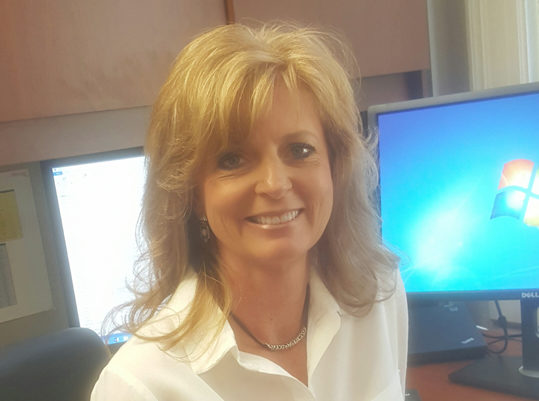
Whether it’s climbing into a combine to harvest the wheat or walking into a congressional meeting to discuss farm policy, Francie Kucera Tolle remains focused on one goal—“It’s the legacy of it.”
Rather than a legacy of how Tolle will be remembered, this is one centered on how others will value and appreciate agriculture as a result of her family’s stewardship.
Having been born on a family farm and now farming with her husband Chuck, Tolle knows the importance of agriculture. She has been a resident in Grant County her entire life and laughed as she reminisced growing up on a farm with her three sisters.
“My dad brought a bottle calf home one time and we thought it was the greatest thing ever and asked for a few more. The next day we had 30 bottle calves and would be mauled when we got to barn,” said Tolle. “A year later we wanted some feeder pigs and my dad brought home a whole truck load. Next, we thought we would like some sheep and our dad said, ‘Really?’ We changed our minds pretty quick.”
Tolle spoke about the daily life lessons that were learned among the cattle and in the wheat fields. The greatest of these was work ethic and faith.
“You have to have faith because there is no telling what the weather will be,’’ said Tolle. “You use your work ethic and do everything you can but in the end you have to have faith.”
Growing up, Tolle did everything the hired hands did on the farm, saying it was expected of her and her sisters. She started driving the combine when she was 12 and basically lived in the barn with the stocker cattle during the winter. She went on to college with no plans on returning home. But as fate would have it she started dating a local farm boy and married him in 1990.
“I didn’t really have plans on marrying a farmer,” laughed Tolle. “I was a business major and liked marketing. But then I started dating Chuck and I came back to agriculture pretty quick.”
They moved and started their own operation in 1992 in Grant County with a quarter of land, mainly growing wheat and running a cow-calf and stocker cattle operation. Their little operation began to grow as Tolle had two boys, Clint and Cole.
Tolle laughed and said her boys never wanted to drive the combine growing up because that was her thing. Now her boys are growing up and making their own legacy. Clint is married and will graduate college soon, with plans on returning to the farm. Cole just graduated high school and is beginning embark on his college journey studying construction management.
In addition to raising two boys and operating a farm, Tolle also works tirelessly to carry on the legacy of her dad, who taught her the importance of agriculture through policy.
“I got my love for policy from him,” said Tolle. “He never went to college but he was the smartest man I ever knew.”
It was not uncommon for Tolle and her father to be talking about world trade, farm policy and commodity markets. This sparked her interest and she began her work in farm policy in 2003 as Director of the Oklahoma Wheat Growers Association.
From here, many doors began to open for Tolle as she served as Agricultural Liaison to Congressman Brad Carson, Director of Agritoursim, Legislative Policy Analyst for the Oklahoma Farmers Union/American Farmers and Ranchers, State Director of Farm Service Agency and is now currently the Regional Director of the Risk Management Agency serving Oklahoma, New Mexico, and Texas.
When asked about her most rewarding experience, there was no hesitation as she recalled the implementation of the Livestock Forage Program, which resulted in paying over a billion dollars to farmers and ranchers in Oklahoma affected by the three year drought.
“I saw people literally cry because they were saved… I will never forget. That was pretty impactful,” said Tolle.
Although she stays busy with policy and farming, she never forgets why she does it. Tolle is proud to say that she is only the second generation born in the United States.
“It’s the legacy of it. My grandparents came here for this reason. Here I am fulfilling the dream they had. I don’t want it to die,” said Tolle.
Again, even though Tolle has left a legacy in what she does, this was not her goal in an individual sense. Instead, she hopes that through her work, people will know and understand the complexity of farming and in agriculture in general.
“It’s not easy,” said Tolle. “Yes it is rewarding but it is the hardest job you will ever do. If you don’t love it, you won’t do it. There is not another job where you work as hard as you do with farming.”
Tolle is also quick to give credit to her husband for all of her success saying he is extremely supportive of everything she has done. Even with all of her accomplishments, her greatest one is building a legacy with her husband to make sure that others will value and appreciate agriculture as a result of their stewardship.
“My goal is to leave a legacy,” she said.
A HELPING HAND: ADON PAYS CLOSE ATTENTION TO DETAIL
Victoria Burdine was not raised with her grandparents. They were deceased, she said, regarding her childhood in Louisiana. Burdine always was the family member who cleaned house and cared for elderly people in her neighborhood in a little town named Rayne.
“I enjoyed it,” said Burdine, LPN, ADON and wound care nurse at Tuscany Nursing Center in Oklahoma City.
Burdine has been a nurse since 2009 and has always served in long-term care. She was a proud CNA for 15 years. Becoming a CNA was a smooth adjustment for Burdine after cleaning neighbors’ homes and running errands at the store for them.
“That’s my passion. A grandmother I could talk to and a grandmother — I didn’t have that,” she said. “So I take these residents here as my grandparents.”
She began working at Tuscany Nursing Center on the day it opened. There was one resident and Burdine was working the night shift, she said. Burdine was the LPN on the floor, and four months later she was asked to become the wound nurse. In early July she added the credential of certified wound nurse to her resume. Certification required rigorous study and taking a test.
“I started at 7 p.m. Sunday night and finished at 3 a.m. in the morning,” Burdine said. “So I am a board certified wound nurse.”
There were a lot of things she was already doing as a wound nurse, but she also learned a lot, she said. The extra education was valuable for her and also added job security to her career, she said.
Burdine said she admires that the nursing staff works well together as a team. At 3 p.m. everyday a few of the residents join her in her office for coffee and cookies. She loves it and said there is something about them that reflects her passion for the elderly.
Residents are of all ages. Some of them are in their 30s and 40s and she loves them, too. Some have been in accidents.
“You never know. It’s sad. I have a few that’s younger than me,” she said. “It is true that back in the day our grandparents would be in a nursing home, but these days it’s really young people, too.”
Burdine said it’s important to let the residents have choices. If they don’t feel like taking a bath at a certain time they can choose a later time.
“If there are certain things they want to eat – let them do it,” she said. “Just give them that freedom of choice. That plays an important role.”
Every once in a while Burdine will work in the skilled nursing unit when needed. Skilled nurses need to pay attention to detail and understand their role as a nurse, she said.
“There’s some hard work back there,” she said.
For long-term care a nurse needs to be compassionate, Burdinecontinued. Nurses without compassion and a love for their job will burnout and not make it in the industry.
“I love my job and I’m very compassionate,” Burdine said. “There’s things I do for a couple of people out of my pocket. Ladies like wigs. They like makeup. Some of them do have family and their family does not come. So I take out of my money and I buy them what they want.”
“If you’re here for the money it’s the wrong place to be.”
One of the residents has a 90-year-old mom that called Burdine from Las Vegas. She wanted to say how appreciative she is of Burdine for taking the time for her daughter to pay attention to small things.
“That means a lot,” Burdine said. “In my mind, the one thing I keep saying is, ‘This may be me one day.’ You know I wish somebody would take the time out if that happens to be me.”
“I want that same person like I am today to be caring. Take a little minute and just listen.”
Burdine tells the CNAs that the residents could be their kids. Across the U.S. nurses and CNAs need to stop what they’re caught up in life and pay more attention to detail, she said.
“Just listen because really that’s all they want you to do,” Burdine said. “So I always say this could be me.”
Currently Burdine is also caring for her mother who came to Oklahoma from Louisiana. She visits Burdine in the summertime.
When returning to Tuscany Village her residents are glad to see her. One of the residents called her at home and Burdine was happy to bring her a hamburger.



